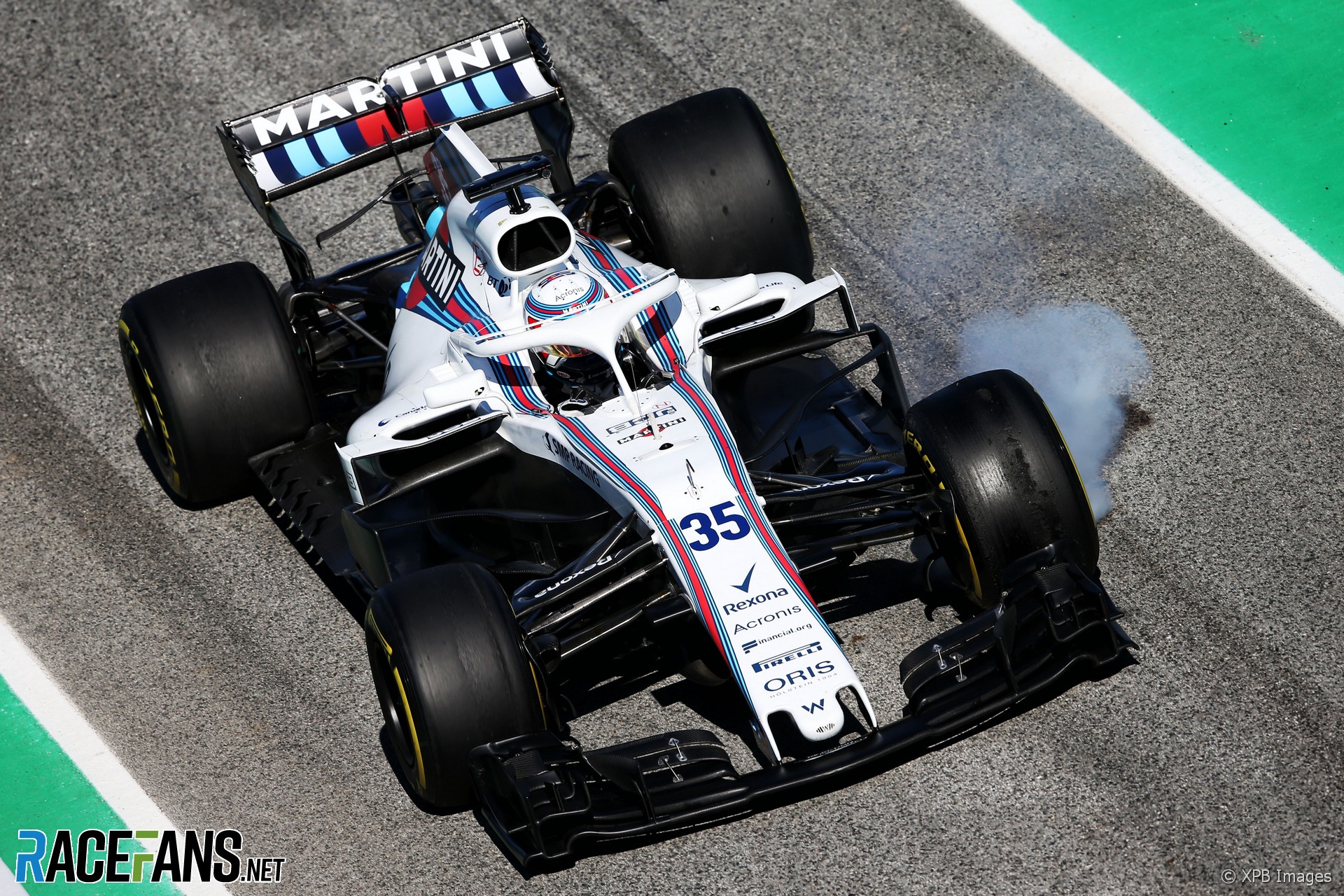[smr2018test]
Ferrari moved the benchmark drastically on day seven of testing for the 2018 F1 season. Bearing Pirelli’s new hyper-soft tyres, Sebastian Vettel’s scorched around the Circuit de Catalunya in 1’17.182 – over 2.3 seconds faster than they’d gone before.
At the end of last week’s running Pirelli said lap times might reach the 1’17s. Indeed they have, and if one of the front-running teams feels so inclined tomorrow we might see a 1’16. Note that Kevin Magnussen, in his Haas got within 1.1s off Vettel today using tyres that were two stages harder.
How much quicker are they than last year?
There’s another reason why Haas’s lap time looks good for Ferrari. Unlike Sauber, they used a 2017-specification Ferrari power unit last year, yet the year-on-year gains they have made are comparable to Sauber’s. Haas’s figures therefore suggest Ferrari’s engine is producing plenty of grunt along with copious amounts of smoke.
Mercedes’ customers, however, don’t seem to be making as great strides. Force India have their hopes pinned on a big upgrade coming in time for the first race.
Williams, however, is the only team left which hasn’t lapped quicker at this test than it did 12 months ago. Robert Kubica has set the team’s fastest time so far, 0.6 seconds faster than either of their race drivers.
Mileage watch
Despite last week’s disruptions, some teams have already exceeded their 2017 testing mileage total, chiefly those who had a tough time last year. These include Red Bull, Toro Rosso and McLaren.
Power units must last seven race distances this year – 2,135 kilometres – plus further running in practice and qualifying. So a team seeking to prove an engine will have to do considerably more than that. Of course teams don’t necessarily reveal when they’re changed a power unit.
Go ad-free for just £1 per month
>> Find out more and sign up
2018 pre-season testing so far
| Team | Distance |
|---|---|
| Mercedes | 3859km |
| Ferrari | 3584.4km |
| Sauber | 3309.7km |
| Renault | 3258.5km |
| Red Bull | 3216.6km |
| Williams | 3188.7km |
| Toro Rosso | 3100.2km |
| Force India | 2550.9km |
| Haas | 2383.4km |
| McLaren | 2346.1km |
2017 pre-season testing total
| Team | Distance |
|---|---|
| Mercedes | 5101.9km |
| Ferrari | 4445.5km |
| Williams | 3724km |
| Sauber | 3663.5km |
| Force India | 3654.2km |
| Red Bull | 3184km |
| Haas | 3170.1km |
| Renault | 2774.4km |
| Toro Rosso | 2718.5km |
| McLaren | 2127.3km |
2018 F1 season
- McLaren staff told us we were “totally crazy” to take Honda engines in 2018 – Tost
- ‘It doesn’t matter if we start last’: How Red Bull’s junior team aided Honda’s leap forward
- Honda’s jet division helped F1 engineers solve power unit problem
- McLaren Racing losses rise after Honda split
- Ricciardo: Baku “s***show” was Red Bull’s fault





Jere (@jerejj)
9th March 2018, 3:17
The first time that anyone sets a sub-1m18s lap time around this circuit in its current 2007-present configuration.
Kcram
9th March 2018, 5:10
Please note that it was K-Mag in the HAAS!
Keith Collantine (@keithcollantine)
9th March 2018, 7:14
Corrected, thanks.
Lennard Mascini (@)
9th March 2018, 5:57
Loving these articles @keithcollantine, any chance of a big table showing every team’s fastest time on each tyre compound?
Stephen Crowsen (@drycrust)
9th March 2018, 6:43
Smoke from the exhaust is synonymous with the burning of oil. I doubt the amount burnt would contribute much to the power of the engine, but it could well exceed the maximum allowed by the FIA.
AliceD (@aliced)
9th March 2018, 7:09
No you are completely wrong about the smoke. All the cars this year expel a lot of oil as per the new rules. In the past they were allowed to recycle the oil back into the engine. The oil is just not as visible from the other teams cars.
Gabriel (@rethla)
9th March 2018, 9:07
How can it be an indication of a good powerunit when teams jumping one and two generations make the same gains?
If anything it makes it seem like Saubers gains are all from the engine while Haas has an blazing chassis.
Egonovi
9th March 2018, 10:00
That seems to be a more logical explanation. @Rethla
Especially after all the reports last year that the Ferrari PU improved so much and was close to the Mercedes unit in HP.